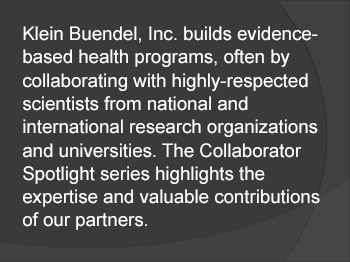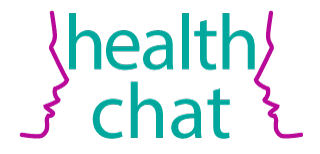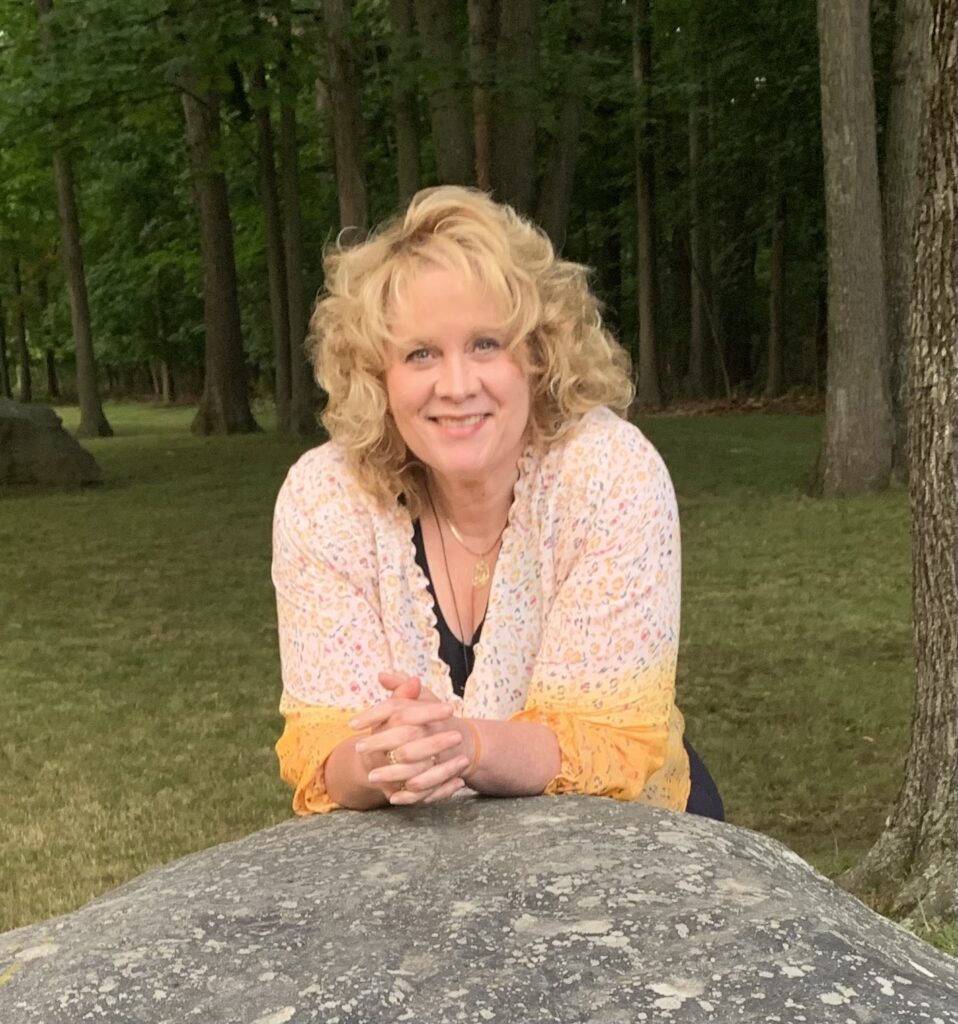Klein Buendel (KB) scientists and staff conducted rigorous behavioral science research with numerous collaborators from across the country in 2021. Our investigators published (or e-published ahead of print) 16 research papers in peer-reviewed journals and presented research findings virtually at 8 national or international conferences. In addition, our investigators are Principal Investigators or Co-Investigators on 6 new research projects that launched this year.
Publications
KB investigators, staff, and collaborators published or e-published the following research papers this year (current or recent investigators and staff are indicated in bold type):
Midgett A, Doumas DM, Myers VH, Moody S, Doud A. Technology-Based Bullying Intervention for Rural Schools: Perspectives on Needs, Challenges, and Design. Rural Ment Health. 2021 Jan;45(1):14-30. doi: 10.1037/rmh0000151.
Buller DB, Woodall WG, Saltz R, Grayson A, Buller MK, Cutter GR, Svendsen S, Liu X. Randomized Trial Testing an Online Responsible Vendor Training in Recreational Marijuana Stores in the United States. J Stud Alcohol Drugs. 2021 Mar;82(2):204-213.
Lee H, Henry KL, Buller DB, Pagoto S, Baker K, Walkosz B, Hillhouse J, Berteletti J, Bibeau J. Mutual influences of mother’s and daughter’s mental health on the closeness of their relationship: an actor-partner interdependence model. J Child Fam Stud. 2021 Mar;30:676-686.
Buller DB, Walkosz BJ, Olivas S, Eye R, Liu X, Kinsey A, Buller MK, Grayson A. Association of Occupational Sun Safety Policy and Actions in State Transportation Sector in the United States. Am J Ind Med. 2021 Apr;64(4):274-282. doi: 10.1002/ajim.23214.
Buller DB, Pagoto S, Baker K, Walkosz BJ, Hillhouse J, Henry KL, Berteletti J, Bibeau J. Results of a Social Media Campaign to Prevent Indoor Tanning by Teens: A Randomized Controlled Trial. Prev Med Rep. 2021 Apr 18;22:101382. doi: 10.1016/j.pmedr.2021.101382. eCollection 2021 Jun.
Heckman CJ, Buller DB, Stapleton JL. A call to action to eliminate indoor tanning: focus on policy [published online ahead of print April 28, 2021]. JAMA Dermatol. doi: 10.1001/jamadermatol.2021.0874.
Loeb SJ, Murphy JL, Kitt-Lewis E, Wion RK, Jerrod T, Myers VH. Inmates Care: computer-based training for geriatric and end-of-life care in prisons. J Correct Health Care. 2021 Jun;27(2):132-144. doi: 10.1089/jchc.20.03.0016.
Bourdeau B, Miller BA, Byrnes HF, Woodall WG, Buller DB, Grube JW. Efficacy of a web-based intervention (Smart Choices 4 Teens) for facilitating parent-adolescent communication about relationships and sexuality: randomized controlled trial. JMIR Pediatr Parent 2021 Jun 15;4(2):e19114. doi: 10.2196/19114.
Banerjee SC, Sussman A, Schofield E, Guest DD, Dailey YS, Schwartz MR, Buller DB, Hunley K, Kaphingst KA, Berwick M, Hay JL. “Let’s talk about skin cancer”: examining association between family communication about skin cancer, perceived risk, and sun protection behaviors. J Health Commun. 2021 Aug 3;26(8):576-585. doi: 10.1080/10810730.2021.1966686.
Riley KE, Sussman AL, Schofield E, Guest DD, Dailey YT, Schwartz MR, Buller DB, Hunley K, Kaphingst KA, Berwick M, Hay JL. Effect of superstitious beliefs and risk intuitions on genetic test decisions [published online ahead of print August 28, 2021]. Med Decis Making. doi: 10.1177/0272989X211029272.
Hay JL, Kaphingst KA, Buller D, Schofield E, Meyer White K, Sussman A, Guest D, Dailey YT, Robers E, Schwartz MR, Li Y, Hunley K, Berwick M. Behavioral and psychological outcomes associated with skin cancer genetic testing in Albuquerque primary care. Cancers (Basel). 2021 Aug 12;13(16):4053. doi: 10.3390/cancers13164053.
Woodall WG, Zimet G, Kong A, Buller D, Reither J, Chilton L, Myers V, Starling R. Vacteens.org: a mobile web app to improve HPV vaccine uptake. Front Digit Health. 25 Aug 2021;3:693688. doi: 10.3389/fdgth.2021.693688.
Doumas DM, Midgett A, Myers V, Buller MK. Usability of a technology-based bystander bullying intervention for middle school students in rural, low-income communities: mixed methods study. JMIR Form Res. 2021;5(10):e32382. doi: 10.2196/32382.
Buller DB, Pagoto S, Henry K, Berteletti J, Walkosz BJ, Bibeau J, Baker K, Hillhouse J, Arroyo KM. Human papillomavirus vaccination and social media: results in a trial with mothers of daughters aged 14-17. Front Digit Health. 2021 Sept;3:683034. doi: 10.3389/fdgth.2021.683034.
Khan E, Kaphingst KA, Meyer White K, Sussman A, Guest D, Schofield E, Dailey YT, Robers E, Schwartz MR, Li Y, Buller D, Hunley K, Berwick M, Hay JL. Comprehension of skin cancer genetic risk feedback in primary care patients [published online ahead of print November 19, 2021]. J Community Genet. doi: 10.1007/s12687-021-00566-9.
Manne S, Kashy DA, Pagoto S, Peterson SK, Heckman CJ, Gallo J, Berger A, Buller DB, Kulik A, Frederick S. Family attitudes and communication about sun protection and sun protection practices among young adult melanoma survivors and their family members [published online ahead of print November 29, 2021]. J Health Commun. 2021:1-11. doi: 10.1080/10810730.2021.2008552.
Conference Presentations
KB investigators, staff, and collaborators gave research presentations and workshops at the following virtual conferences this year:
- 33rd Annual Scientific Sessions of the Eastern Nursing Research Society (March 2021)
- 14th Annual Academic and Health Policy Conference on Criminal Justice Health (April 2021)
- DC Health Communication Conference (April 2021)
- 42nd Annual Meeting & Scientific Sessions of the Society of Behavioral Medicine (April 2021)
- 71st Annual Conference of the International Communication Association (May 2021)
- 5th Annual Conference of the UConn Center for mHealth and Social Media (May 2021)
- 5th International UV and Skin Cancer Prevention Conference (September 2021)
- Custody and Caring: 17th Biennial International Conference on the Nurse’s Role in the Criminal Justice System (November 2021)
Lastly, once the COVID-19 vaccine was widely available, a handful of long-time KB senior employees decided to make professional and personal life changes. We said farewell to Pam Stevens, the Finance Director for 15 years; Dr. Valerie Myers, a Senior Scientist for 10 years; Lucia Liu, the Biostatistical Manager for 15 years; and Adam Ashby, the Senior Developer for 15 years. They will be missed.










